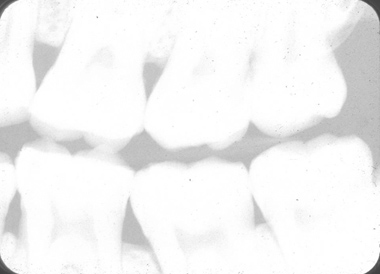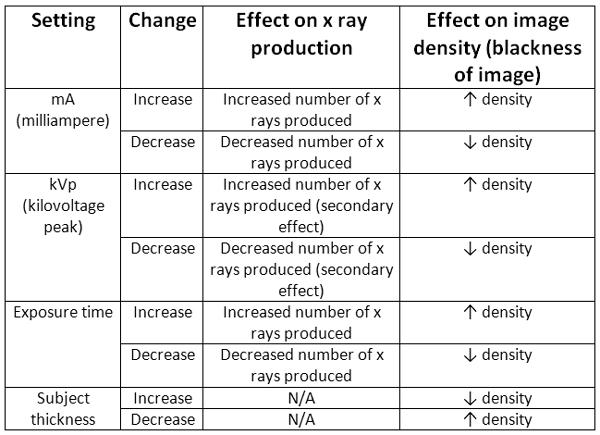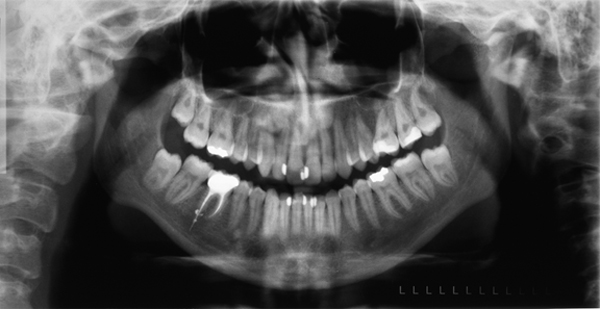Today is all about image density and how different settings on the x ray unit as well as the subject being imaged will effect this. The four topics I will be covering are: milliampere (mA), kilovoltage peak (kVp), exposure time, and subject thickness. I have covered some of these topics in the past and am providing a short summary today for those studying for boards.
For quick reference, when referring to density in this post I am referring to the blackness of the image. An increased density image will have increased blackness and vice versa, a decreased density image will have decreased blackness or an increased white image.
Increased density
Decreased density
Milliampere (mA)
Milliampere (mA) effects the quantity of x rays produced. When increasing mA, you are increasing the number of x rays being produced resulting in an increased density of the image. When decreasing mA, you are decreasing the number of x rays being produced resulting in a decreased density of the image. To read more about mA check out this post.
Kilovoltage peak (kVp)
Kilovoltage peak (kVp) has primarily an effect on the quality (or energy) of the x rays being produced. It has a secondary effect on the quantity of x rays being produced. Today I will be emphasizing the secondary effect on quantity. When increasing kVp, you are increasing the number of x rays being produced resulting in an increased density of the image. When decreasing kVp, you are decreasing the number of x rays being produced resulting in a decreased density of the image. To read more about kVp check out this post.
Exposure time
Exposure time is exactly what it sounds like, the time used when exposing a patient. This one is directly associated with the quantity of x rays being produced. When increasing exposure time, you are increasing the number of x rays being produced resulting in an increased density of the image. When decreasing exposure time, you are decreasing the number of x rays being produced resulting in a decreased density of the image. To read more about exposure time check out this post.
Subject thickness
Subject thickness refers to the thickness of the object/patient you are imaging. An increased subject thickness will result in more attenuation of the x rays. This results in a decreased density of the image. A decreased subject thickness will result in less attenuation of the x rays. This results in an increased density of the image.
Take home points
Next week: Image distortion
Should you have any questions or thoughts on this topic, please let me know.
Thanks and enjoy!




